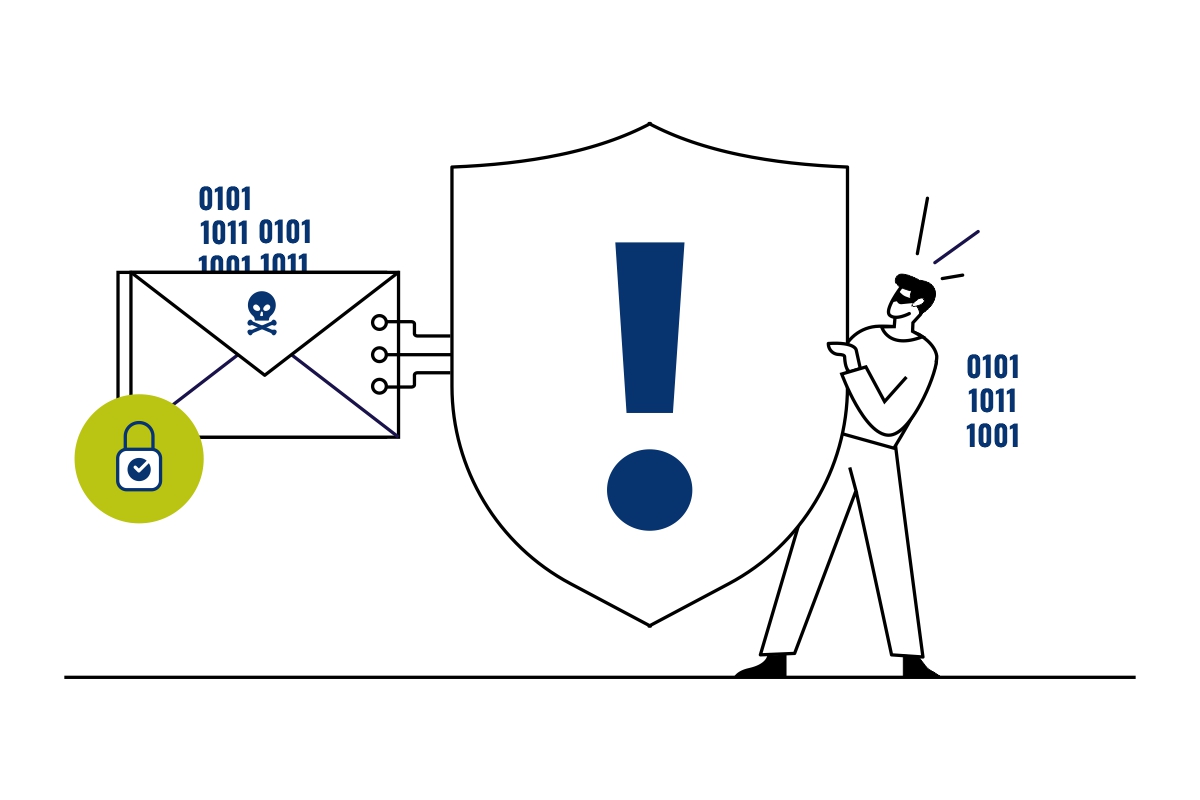
Ensure Your Emails Are Safe And Secure
Despite the fact that online communication has made the world a better place, it is also associated with many risks. In the case of businesses, sensitive information such as customer details and confidential company data needs protection. The internet is estimated to have over 1.7 billion websites as of 2021, but not all of them are safe to browse. If a website is unsafe, the browser sends a warning message asking the user to return to safety. Check that the URL of a website begins with a closed lock to know if it is secure. A secured website has the lock closed and has HTTPS written in the URL. However, if the lock is open and the URL contains HTTP, it means that the website is unencrypted. In HTTPS, the 'S' in the URL means secure, and HTTP stands for Hypertext Transfer Protocol. This means that the website is encrypted with a Security Protocol such as SSL (Secure Socket Layer) or TLS (Transport Layer Security).
Encryption to protect your Emails
According to Wikipedia, protocols used for end-to-end email encryption include Bitmessage, GNU Privacy Guard (GPG), Pretty Good Privacy (PGP), and S/MIME. In the case of HTTPS, the most commonly used security is SSL/TLS. This technology prevents criminals from reading and modifying sensitive data transferred between two systems. Having an SSL certificate provides HTTPS encryption for the website. It is used to authenticate an origin server's identity which thereby prevents attackers from attempting on-path attacks and domain spoofing. An HTTPS connection encrypts the communication between a user's browser and the web server.
Analyze and Track Issues
Get real-time performance statistics and an overview of various metrics represented in the form of a dashboard. These dashboards are divided into three categories: Protocol, Server Health, and Security. Dashboards based on security include Connections, IDS Violations, and Viruses Caught.
User Reports - Information on disk usage, viruses caught, outbound messages, inbound spam and messages are displayed on this dashboard.
Inbound Spam Counts - This report gives a count of the number of spam messages received at different tolerance levels for specific domains or all domains on your server.
Outbound Spam Counts - This report gives a count of the number of outgoing messages blocked due to spam for specific or all domains.
Domain Reports - Dashboard for Domain Administrators to track their domain details. Information on overall disk usage, spam, viruses caught, incoming as well as outgoing messages.
Disk Usage Report - Information on disk usage, viruses caught, outbound messages, inbound spam and messages are displayed on this dashboard.
Viruses Caught - Information on disk usage, viruses caught, outbound messages, inbound spam and messages are displayed on this dashboard.
Setting Passwords for Security - Information on disk usage, viruses caught, outbound messages, inbound spam and messages are displayed on this dashboard.
Additional Security for Mail Server
To safeguard your emails, most email services use different types of protection methods. This article explains how ENTPMail works to add an additional level of security and privacy.
✉
Intrusion detection system (IDS)
There are certain rules of IDS with which it is possible to monitor certain actions taking place in the mail server, such as the number of connections coming from a single IP address, the number of messages sent within a specific timeframe, and the number of login attempts.
✉
Denial of Service (DoS)
An excessive number of connections from the same IP address can indicate a DoS attack. Enabling this option allows you to block IP addresses that connect too often to the server.
✉
Internal Spammer
Using this rule in ENTPMail will block an account from sending any emails in the future. During a specified time frame, whenever multiple emails from a single sender are delivered externally from the server, it will alert the administrator.
✉
Blacklist/Whitelist
System Administrators can control the blacklisted and whitelisted IP addresses from access to mail service. Blacklisted IP Addresses are restricted from making inbound connections. Whereas, whitelisting an IP address adds it as a trusted source and allows connections to neglect restrictions such as spam filtering, greylisting, and IDS rules.
Suggestions for maintaining a locked-down server
For the security of mail servers, ENTP Mail has been built with some extraordinary features. Here are a few tips on ways to maintain a locked-down server.
✉
Update your application on a regular basis
Users often fail to update their applications, considering it an unnecessary action. But, it is important to keep your software updated as it often includes critical patches to security holes. Updating the software not only updates your application to a better version but also prevents hackers from accessing your private information and causing you loss of identity theft.
✉
Turn off Catch-All Accounts
Emails containing your business domain - For example if your business email is opq.12@xyz.com, and the spammer sends an email to opq_12@xyz.com. Enabling Catch-All will make the email be sent on the Catch-All Mailbox instead of getting bounced. The disadvantage here is, if not cleared the mailbox regularly, this could occupy a lot of disk space with unwanted spam emails.
✉
Enable SMTP Authentication
It is recommended to enable SMTP Authentication to prevent hackers from using your bandwidth and system resources for sending emails. Hackers usually try to access many email accounts. Unauthenticated accounts fall at the risk of being spammed. When SMTP Authentication is enabled, users are made mandatory to supply credentials for sending emails from the server.
Your Email Security is our Priority
Being a business, email security is one of the major requirements for functioning smoothly. ENTP Mail knows it well and hence makes it a priority to provide the solution for it too!
Haven’t you switched to a safer email yet?




